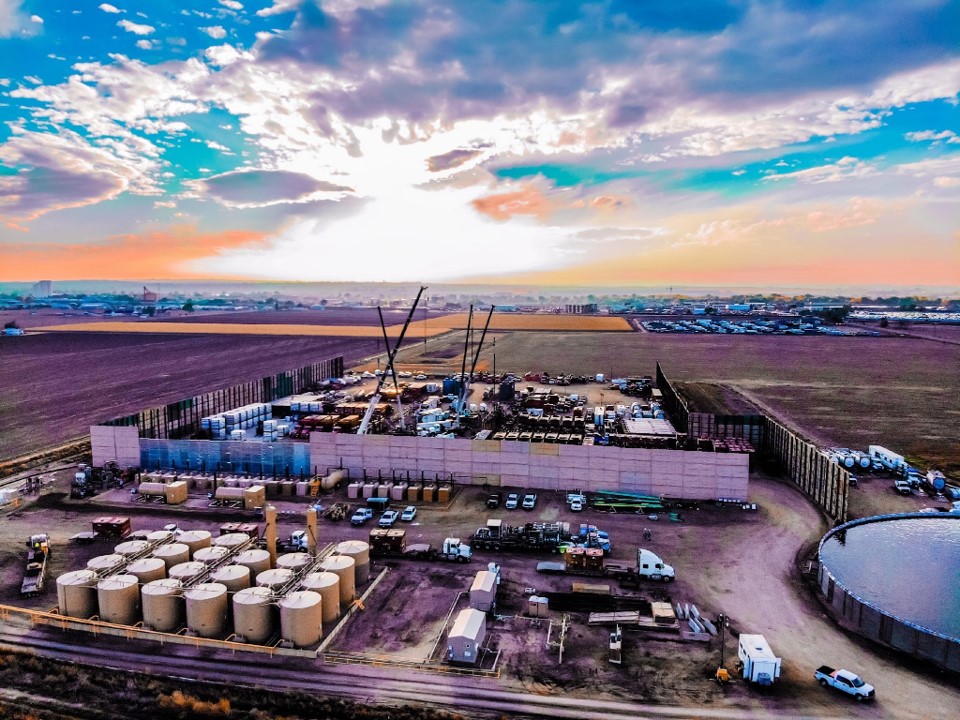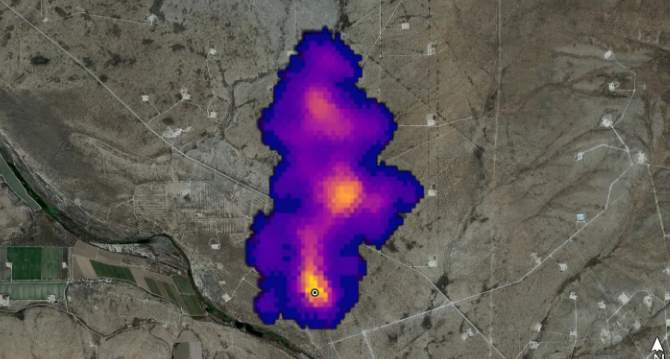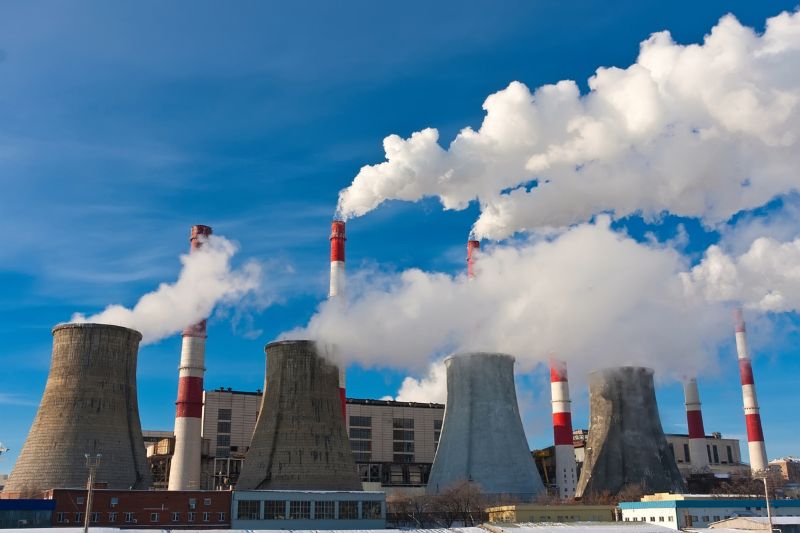Welcome to 2025! It’s still early in the year but there is a lot happening in the air world so let’s get straight to the updates:
Super Emitter Is Now Live
The Super Emitter Program has its first approved Verifier, Carbon Mapper, as of January 2, 2025. The Methane Super Emitter Data Explorer is now live as of January 17th with events already being reported in California.
OOOOb Potential Updates
On December 20,2024, the EPA responded to industry’s request for reconsideration on NHV sampling methods. The EPA is proposing the following amendments:
Continuous Monitoring
- Expand the scope of the exclusion for the net heating value (NHV) continuous monitoring requirements and alternative performance test (sampling demonstration) option so that the following control devices would not be required to make any such demonstration: unassisted flares or enclosed combustion devices at a new source and for unassisted, air-assisted, or steam-assisted flares or enclosed combustion devices at existing sources.
Sample methods
- Solicit comment to expand the use of similar consensus-based standards (e.g., GPA 2166 and GPA 2261) as an alternative to ASTM-D1945.
- Confirm that Tedlar® bags may be used to satisfy the grab sampling requirements.
Sampling Timeframe
- The EPA is proposing to allow for breaks during weekends and holidays which may occur during the 14-day sampling period, such that the 14 days do not have to be consecutive.
- Retain the one-hour minimum sampling time for the twice daily samples, except in cases where low or intermittent flow makes one-hour sampling infeasible.
- Allow for less than one-hour sampling times provided documentation and reporting is followed where it is infeasible for longer sampling.


Waste Emission Charge in Limbo
On November 18, 2024, the EPA published the final rule of the Waste Emission Charge (WEC). The WEC assigns a monetary value to methane emissions, known as the methane tax, that exceed intensity limits set for the oil and gas industry. The finalized rule has several changes from the proposed rule; one significant change is the delay of the WEC due date to November 1st of the reporting year instead of March 31st. The revised date allows for the verification of the GHG reports by the EPA and eliminates the risk of companies over/under paying on their potential WEC.
As of January 16, 2025, 22 states have petitioned for the Courts to review this WEC final action. The State Senate and House repealed the WEC the week of February 24th. At this time, the WEC associated tax is still in place.
OOOOc Rulemakings Moving Forward
The implementation timeline (see table below) for states to integrate OOOOc is already ticking along, and many states have begun their rulemaking processes.
OOOOb Publication | OOOOb Effective Date | State plans developed | EPA deadline approval on State plans | Federal Plan Issuance (if state plans are not adequate) | Compliance with OOOOc begins (facilities before 12/6/2022) |
3/8/2024 | 5/7/2024 | March 2026 | May 2027 | May 2028 | March 2029 |
We’ve broken down the status for each state we are currently watching. This will be a nation-wide process, so we’re only looking at some of the Western States. We will continue to provide updates as we see them:
State | Stakeholder feedback deadline | Draft | Public Comment Period | Public Meeting for Formal Comments | Adoption Public Meeting | Final Adoption |
Texas | 1/15/2025 | August 2025 | August-September 2025 | September 2025 | February 2026 | March 2026 |
Oklahoma | February 3, 2025 | Mid 2025 | Late 2025 | Early 2026 | ||
Wyoming | December 2, 2024 | |||||
Colorado | Approved February 21,2025 | |||||
Texas
Texas held four stakeholder meetings throughout November and December. Written stakeholder comments were accepted until January 15, 2025. Texas also has a tentative schedule . The proposed rule is estimated to be published in August 2025 with a 30 day comment period and a final public meeting to be scheduled in September of 2025.
Oklahoma
The Air Quality Division (AQD) of the Oklahoma Department of Environmental Quality (DEQ) held a public information session on December 3, 2024. Requests for public comments were due by February 3, 2025. View the meeting recording and explore the state website for more details.
Wyoming
WDEQ accepted meaningful engagement until December 2, 2024. Their rulemaking website has more details.
Colorado
Colorado has an existing implementation plan. In order for the plan to meet OOOOc requirements, Colorado implemented a reduction of pneumatic controllers listed out in the table below. The reduction plan was approved by the CAQCC on February 21, 2025
Phase in program for reducing NG driven controllers:
Attainment | Non-Attainment | Date converted by |
25% | 50% | 3/1/2026 |
50% | 100% | 3/1/2027 |
75% | 100% | 3/1/2028 |
100% | 100% | 3/1/2029 |
New Mexico
New Mexico has not made headway on the OOOOc implementation plan.
Utah
Utah proposed incorporating OOOOc language to amendments in October 2024.

Federal HFC Rules Passed
On September 20, 2024, the EPA passed a new final rule regulating owners, operators, servicers, recyclers, disposal facilities, and installers of equipment containing HFCs. The rule specifically targets refrigeration, air conditioning, heat pump, and fire suppression sectors.
Online JJJJ, IIII, and ZZZZ Stack Test Reporting
On August 3, 2024 the EPA finally made updates to allow electronic reporting of initial notifications, performance test reports, notification of compliance status, and annual/semiannual compliance reports for engines subject to NSPS Subparts IIII and JJJJ or NESHAP Subpart ZZZZ through the Central Data Exchange (CDX).
Appendix W Modeling Guideline Updated
On November 20, 2024 the EPA published updates to Appendix W for air quality modeling with an effective date of January 28, 2025. The updates officially added RLINE as a model for mobile sources, added Generic Reaction Set Method (GRSM) as a Tier 3 option for NOx conversion, adds another algorithm (COARE) for overwater air modeling, and includes guidance for selecting background concentrations.
Colorado – ECMC Cumulative Impacts Rule Updates Passed
The ECMC passed wholesale changes to their regulations in late 2024, called the Cumulative Impacts and Enhanced Systems & Practices Rules. The rules went into effect on December 15, 2024. The ECMC has already started to roll out new guidance documents and forms at the website.
Colorado – Toxic Air Contaminants
In December 2024, the CDPHE identified five (5) priority toxic air contaminants (PTACs) to further develop specific regulations and reporting in the future. The PTACs are benzene, hexavalent chromium compounds, ethylene oxide, formaldehyde, and hydrogen sulfide.
Further, the CDPHE released a gap analysis report of its air toxics reporting program and updated some of the reporting requirements for facilities. As a reminder any company with a major source facility or a synthetic minor source facility must report TAC emissions either in the O&G annual report or in a standalone TAC report. The Division has a list of expected reporters based upon permitting.
Colorado – Nox Intensity Reporting
The first NOx intensity reports for O&G facilities in non-attainment areas were due to the CDPHE on November 30th (and annually thereafter). The NOx Information Form 2D is due to the ECMC by February 15th.
Colorado – GHG Reporting Requirements Expanded
Colorado updated its greenhouse gas emissions reporting requirements (Regulation 22) on October 16, 2024. The updates expand the reporting requirements to all municipal solid waste landfills within the state. Reports are due March 31st.
Colorado – Midstream Segment Intensity Rules Passed
In December 2024, the AQCC codified the midstream segment emission reduction plan (SERP) to achieve the 20% GHG emission reduction goal by 12/31/2030. The rules establish a performance-based cap approach set on a company-wide basis rather than by individual facilities. The rules establish a GHG credit trading market and establishes a workable program for new midstream entrants to the market.
Colorado – February 2025 Rulemaking Updates
The AQCC updated Colorado Regulation 7 in late February. The biggest changes are:
- Expanded definition of DI Communities which will likely rope in significantly more facilities;
- Phase out natural-gas operated pneumatic controllers and pumps at all oil & gas facilities, statewide;
- Major updates to the pre-production and production air monitoring program to improve data quality through standardized calibration and validation procedures
Colorado – Other Smaller Updates
- The modeling determination form now has an online submittal format .
- A new facility inspection viewer has been published allowing map viewing of location specific permitting, reporting, or inspections.
- The Division released updated reporting forms for the COEI for RY2024 due 6/30/2025. A meeting on February 27th is scheduled to go over major changes.
- The RAQC reported that the 2024 Ozone Season (May 1 – Sept 30) had 40 days in excess of the federal ozone standards (70 ppb).
New Mexico – The Fee Increase Fight
The AQB failed to increase permitting fees as it intended in 2024. As a result, NMED sent out a letter to businesses seeking permit approvals that permitting timelines will be delayed for the foreseeable future due to budget constraints using a temporary emergency rule updating the permitting timeline requirements for the Department. NMED expected to begin working on air quality permits again after Monday, Feb. 24. The Air Quality Bureau expected to receive needed funding by Friday February 21st.
New Mexico – Regional Haze Rulemaking Postponed
The Regional Haze rulemaking and SIP update was postponed until April 28 – 30th, 2025. The proposed rule requires 23 facilities and their identified sources to improve controls with associated monitoring, recordkeeping, and reporting requirements. The rulemaking will ensure enforceability by the EPA within the New Mexico SIP.
Texas – PM2.5 Non-Attainment Updates
Due to updates in the PM2.5 NAAQS standard, the TCEQ is recommending Bowie, Dallas, Harris, and Tarrant counties be designated as non-attainment for PM2.5 by the EPA. Non-attainment status will require tighter restrictions on permitting and compliance of sources emitting PM2.5.
Texas – Emission Reduction Funding Available
The TCEQ extended the due date for the application to March 3rd for companies looking to receive funding for new technology to reduce methane emissions.
Texas – NG Electric Generating Unit Permits
The TCEQ published a new non-rule standard permit for use by natural-gas electric generating units, allowing for greater flexibility than a PBR.
Texas – P&A Well Funding Available
Texas has published a new program giving out financial assistance to operators looking to plug & abandon marginal wells. The funding was granted under the federal IRA. Operators looking to take advantage of this program can find more information here.
Upcoming Due Dates
- February 14th = CO Effective Date of Midstream Segment Emission Reduction Program
- February 28th = COEI Revised Annual Reports due (if error discovered 7/1 – 12/31)
- March 31st = EPA GHG Reporting
- March 31st = TCEQ EI Reporting
- April 30th = CO Glycol NG Dehydrator Reporting
- April 30th = CO NAA Storage Tank Report
- April 30th = CO Excess Emissions Reporting
- April 30th = CO APEN revisions due for applicable changes
- April 30th = WY Annual EI Reporting
Reporting Deadlines
Report | Due Date |
SARA Tier II Reporting | March 1, 2025 |
GHG Reporting | March 31, 2025 |
Texas Emissions Inventory | March 31, 2025 |
New Mexico Emissions Inventory | April 1, 2025 |


